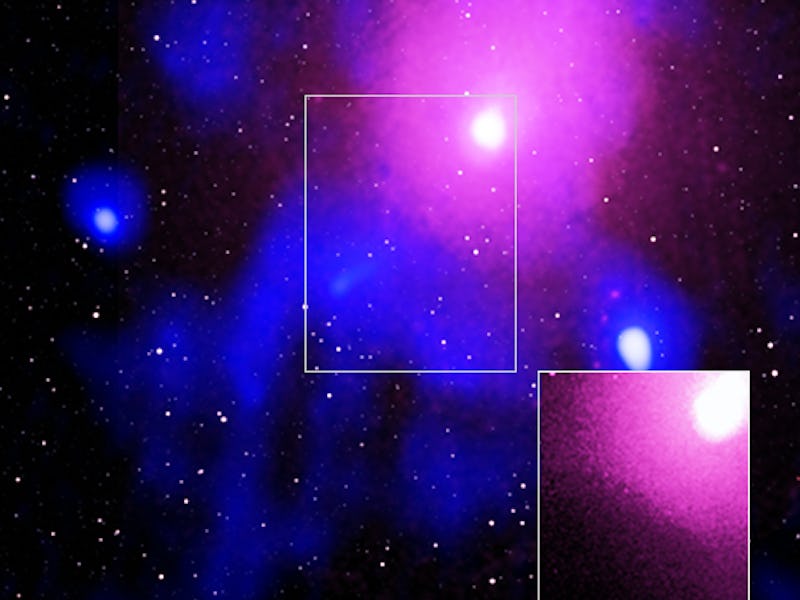Powerful blast breaks the record for largest explosion in the universe
390 million lightyears away, a supermassive black hole rocked the cosmos.

The record for the largest, most cosmos-shattering explosion has been broken. Out in the vastness of the universe, scientists say they have detected a blast fives times more powerful than anything they had seen before — and they know the culprit.
Astronomers happened upon the massive explosion in data collected by NASA's Chandra X-ray Observatory and the European Space Agency's XMM-Newton. The scientists detail the blast in all its glory in a study published Thursday in The Astrophysical Journal.
The data reveal the explosion occurred in the Ophiuchus galaxy cluster, which is located in a far corner of the cosmos, some 390 million light years away from Earth.
A galaxy cluster is basically a group of galaxies, dark matter, and hot gas, held together by sheer gravitational power. These behemoths make up the largest structures in the entire universe — befitting of the source of the largest explosion.
One of the galaxies in the Ophiuchus happens to have a supermassive black hole at its center. And it is this supermassive black hole that is the likely culprit behind the blast.
“You could fit fifteen Milky Way galaxies in a row into the crater this eruption punched into the cluster's hot gas," Simona Giacintucci, a researcher at the Naval Research Laboratory in Washington, DC, and lead author of the study, said in a statement.
The largest explosion detected in the universe is marked by a white spot surrounded by clouds of hot gas.
Black-hole blast off
Black holes can shoot out streams of material, either in the form of heated jets or beams that blast off into space. For context, these eruptions tend to be hundreds or even thousands of times less powerful than this explosion.
The data from Chandra suggest that the supermassive black hole in question shot off some extremely powerful jets. These jets carved out a gigantic cavity in the hot gas located in the galaxy cluster, resulting in the gigantic eruption.
The explosion snatches the crown for Largest Blast in the Universe from an explosion that occurred in 2003, labeled as MS 0735.6+7421 — this new blast was five times stronger than MS 0735.6+7421.
Although the data are just coming to light now, the blast was originally detected in 2016, when scientists noticed an unusual curved edge in one of Chandra's images of Ophiuchus.
To suss out what had caused the curve, researchers used new radio data to discover that the curved edge is in fact part of the wall of a cavity carved out by the eruption.
"The radio data fit inside the X-rays like a hand in a glove," Maxim Markevitch, a researcher at NASA's Goddard Space Flight Center and co-author of the new study, said in the statement.
"This is the clincher that tells us an eruption of unprecedented size occurred here."